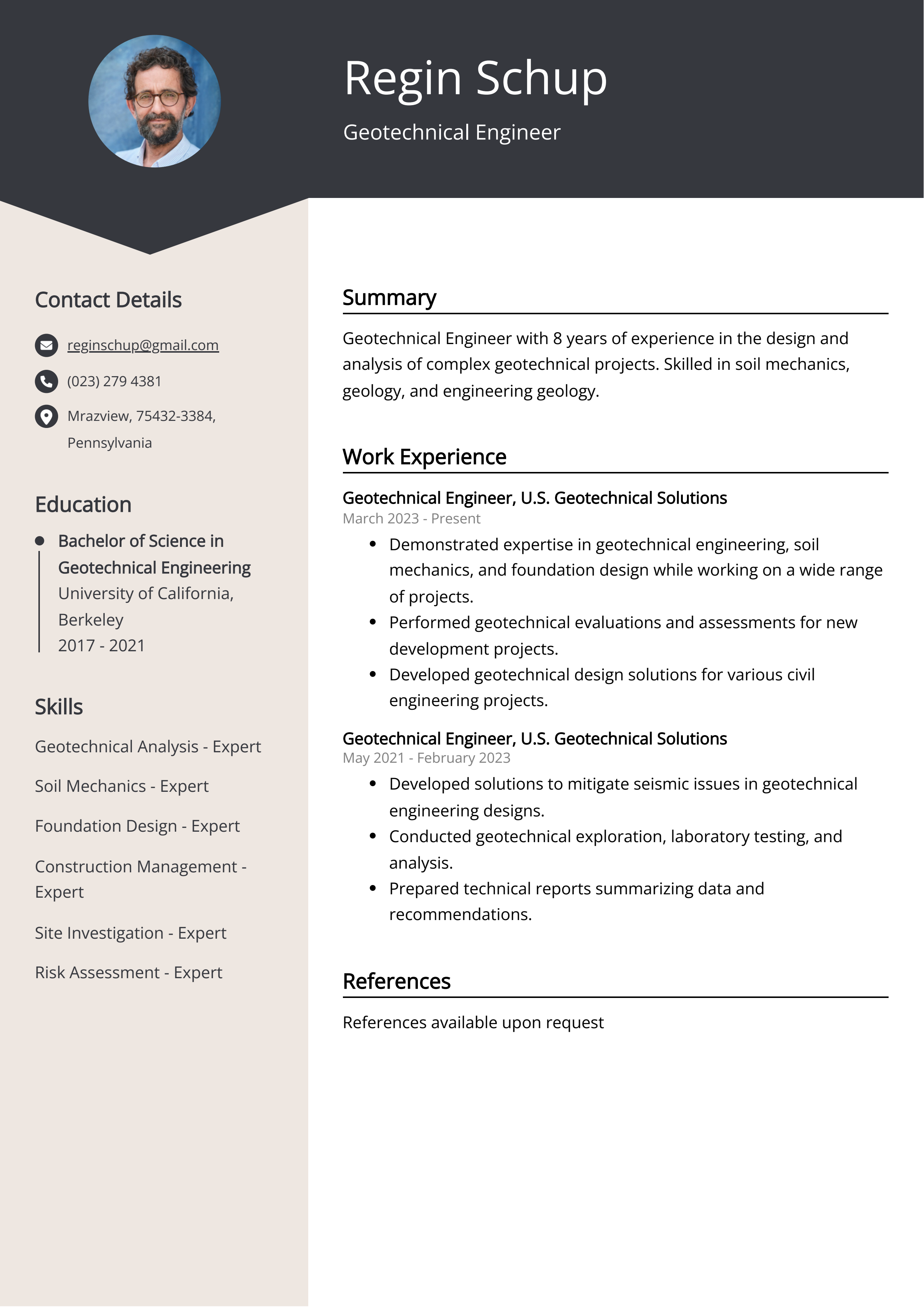The Definitive Guide to Geotheta
The Definitive Guide to Geotheta
Blog Article
See This Report about Geotheta
Table of ContentsThe 8-Minute Rule for GeothetaThings about GeothetaThe 7-Minute Rule for GeothetaThe Single Strategy To Use For GeothetaThe Facts About Geotheta Uncovered

They conduct website investigations, gather samples, carry out lab tests, and assess information to review the viability of the ground for construction tasks - Engineer of Record. Based on their searchings for, geotechnical designers provide referrals for structure design, slope stability, maintaining frameworks, and reduction of geotechnical threats. They team up with other specialists, such as designers, architectural designers, and construction groups, to guarantee that geotechnical considerations are integrated into the overall project style and application
By assessing the behavior and buildings of dirt and rock, they can recognize potential geotechnical hazards such as landslides, dirt settlement, or slope instability. Their know-how aids stop failings or mishaps that might threaten lives and property. Right here are some in-depth tasks and responsibilities of a geotechnical designer: Website Examination: Geotechnical engineers conduct website investigations to gather data on subsurface conditions.
They analyze the information to understand the residential properties and actions of the dirt and rock, including their toughness, leaks in the structure, compaction characteristics, and groundwater conditions. Geotechnical Analysis and Design: Geotechnical engineers assess the data gathered during site examinations to examine the stability and viability of the site for building tasks. They do geotechnical estimations and modeling to review variables such as birthing capability, settlement, slope stability, side planet stress, and groundwater circulation.
The Only Guide for Geotheta
Structure Style: Geotechnical designers play an essential function in making foundations that can securely sustain the desired structure. They analyze the soil conditions and lots requirements to determine the proper foundation kind, such as superficial structures (e.g., grounds), deep foundations (e.g (https://pxhere.com/en/photographer/4325446)., heaps), or specialized strategies like soil enhancement. They think about factors such as negotiation limitations, bearing ability, and soil-structure communication to establish optimum structure styles
They review building and construction plans, monitor website activities, and perform field evaluations to confirm that the design recommendations are followed. If unpredicted geotechnical problems emerge, they examine the circumstance and offer recommendations for remediation or changes to the layout. Threat Assessment and Reduction: Geotechnical engineers analyze geotechnical dangers and dangers connected with the task site, such as landslides, liquefaction, or dirt erosion.

Partnership and Communication: Geotechnical engineers function carefully with other professionals involved in a task, such as engineers, structural designers, and building groups. Efficient communication and cooperation are necessary to integrate geotechnical considerations into the total job design and building and construction procedure. Geotechnical designers supply technological know-how, answer inquiries, and ensure that geotechnical demands are met.
The Ultimate Guide To Geotheta
Here are some sorts of geotechnical engineers: Foundation Engineer: Foundation engineers focus on making and evaluating foundations for frameworks. They assess the soil problems, lots requirements, and site attributes to establish the most suitable foundation kind and layout, such as superficial structures, deep structures, or specialized strategies like stack foundations.
They assess the elements influencing slope security, such as dirt buildings, groundwater problems, and slope geometry, and establish approaches to stop incline failings and alleviate risks. Quake Engineer: Earthquake engineers focus on examining and creating frameworks to stand up to seismic pressures. They examine the seismic hazard of a website, review dirt liquefaction possibility, and establish seismic design standards to make certain the safety and security and strength of structures during earthquakes.
They execute area screening, collect samples, and analyze the gathered data to identify the dirt homes, geologic formations, and groundwater conditions at a website. Geotechnical Instrumentation Engineer: Geotechnical instrumentation designers concentrate on surveillance and measuring the habits of soil, rock, and frameworks. They set up and preserve instrumentation systems that keep an eye my sources on aspects such as soil negotiation, groundwater levels, incline motions, and architectural variations to analyze efficiency and offer very early warnings of possible issues.
9 Simple Techniques For Geotheta
They carry out examinations such as triaxial tests, debt consolidation examinations, direct shear tests, and leaks in the structure tests to collect information for geotechnical analysis and layout. Geosynthetics Engineer: Geosynthetics engineers concentrate on the style and application of geosynthetic products, such as geotextiles, geogrids, and geomembranes. They make use of these materials to boost dirt stability, enhance slopes, provide drainage options, and control erosion.
They often tend to be investigatory people, which implies they're intellectual, reflective, and inquisitive. They are interested, systematic, sensible, logical, and rational. Some of them are additionally social, meaning they're kind, charitable, cooperative, client, caring, handy, understanding, sensible, and pleasant - Consulting Engineer.
In the workplace setting, geotechnical designers use specialized software devices to do computations, develop styles, and analyze data. They prepare records, evaluation job specs, communicate with customers and group participants, and coordinate job activities. The office setup supplies a helpful setting for research study, evaluation, and cooperation with other professionals included in the project.
The smart Trick of Geotheta That Nobody is Talking About
They regularly go to task sites to perform site examinations, examine geotechnical conditions, and gather information for analysis. These brows through include taking a trip to different places, often in remote or challenging terrains. Geotechnical designers may carry out dirt sampling, conduct tests, and screen building and construction activities to make sure that the geotechnical elements of the project are being executed appropriately.
Geotechnical designers also work in specialized geotechnical labs. Geotechnical lab engineers work thoroughly in these environments, taking care of testing devices, running tools, and recording data.
Report this page